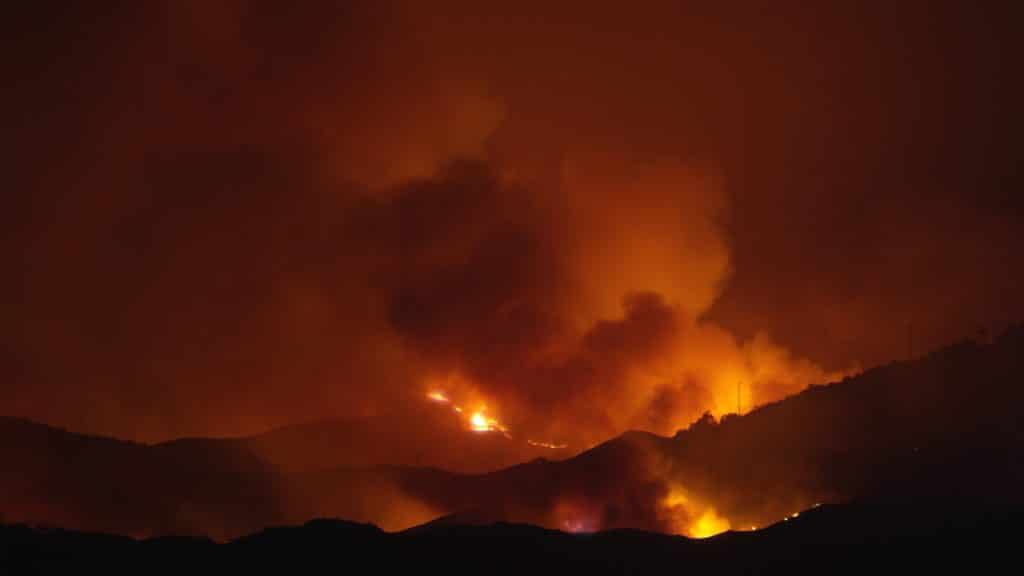
By Fergus King
15 December 2021
The COVID-19 pandemic has seen a resurgence of interest in the Book of Revelation with competing claims being made for its anticipation of recent events. It’s a type of thinking that has been adopted across the spectrum of social groups.
For some, the pandemic signals the beginning of the end for consumer-based capitalism, and has prompted political, social and economic reflection on the distribution of wealth, inequality, and privilege. Others see the curtailing of freedoms as signs of encroaching totalitarian government, heralding the erosion of freedoms of all kinds.
It is certainly strange to think that only a few years ago we would have been worried about the perceived loss of privacy from increased numbers of surveillance and CCTV cameras. Today we record our every move with QR readers on our phones – of our own free will.
And, of course, the vaccines on offer have been called by some “the mark of the beast”: making medicine a litmus test of spiritual fidelity. This of course begs Socrates’ comment: what if the doctor was God’s answer to your prayer to be healed?
Underlying this there is a great irony. That is, while many of our reactions to COVID-19 would seem to imply that this has been an unparalleled period in history, the Book of Revelation has never lacked for folk to tie it to their particular circumstances, to say: “This – the here and now – is what Revelation spoke of – now, and only now, are things coming to pass…”.
Read more: Comfort in being known by God through despair
The Reformers and Counter-Reformers of the 16th century could happily identify the Beast with Rome, Geneva, or Wittenberg. A truly ecumenical text, Revelation could be dragooned into service by both Catholicism and Protestantism. Even Luther, who reckoned Christ was not known or recognised within it, could put his name to books whose woodcuts cheerfully decorated the Beast with a papal tiara.
Later, others thought that previous pandemics such as the Black Death in Europe and the Spanish Flu of 1918 were presages of the End Times.
Particularist readings have persisted within the 20th century. Hal Lindsey, writer of the Late Great Planet Earth, is a noted offender, blessed with a readership whose mercifully short memories have allowed him to keep re-interpreting the imminence of the end times since the 1970s. Having predicted the events of that period as the end times, and repeated the practice in both the 1980s and 1990s, he is still engaged in the prediction business.
The upshot of this that we must realise that all attempts to read Revelation as some time-capsule, set to detonate at some far-off point in history, have all turned out to be very damp squibs. If any of these truly were the end times, they materialised with not even a whimper, never mind a bang.
Revelation’s first readers knew better. The folk who encountered revelation recognised that the beast of chapter 13 verse 18, identified by the numerological code “666”, referred to the Emperor Nero. Such a reading was possible, even after Nero’s death in AD68, because of a myth which persisted that he was not really dead, he was most likely in the Parthian empire, and would return at the head of a conquering horde. Such was their conviction, that translators of the text would change the number to match the numerological conventions of given languages. The Hebraic 666 could become a Greek 616.
Those first readers of Revelation knew that this was a book about their world, their reality, and was not some prediction of far-off events. The way in which Revelation is put together confirms this, but is often ignored because it is not, to be honest, a book that is often read at one sitting. I recommend the process.
Revelation starts with a series of short letters: an introduction from the writer, John, and then seven short letters each directed to particular congregations, describing their strengths and weaknesses (chapters 1-3). Then come visions of the heavenly court, which make clear that the world ends with the triumph of God and the Lamb (chapters 4-5), a theme which is reiterated at the very end of the book (chapters 21-22), and by numerous vignettes and hymns which appear in the middle of the intervening scenes of carnage. The main section of the text then details a drama in which a scroll is opened, then it is read (chapters 12-16). Its use of numbers and colours shows that these heavenly and hellish scenes are the same scenes viewed from different perspectives. The remaining sections detail the effect of reading the scroll, the downfall of Babylon, and the coming of the Kingdom (chapters 17-22).
Does this mean that the book is only about Nero and ancient Rome? To take such a view would make the book as redundant to us as a futurist view would have made it to ancient audiences.
We find a better approach in the writing of Emmanuel Obeng, a Ghanaian theologian:
In Africa today, there are still marks of the “beast”- pain and suffering arising from ethnic conflicts and civil wars, corruption in high places which results in unnecessary deaths on our roads, political assassinations, high increase in crime on our streets, extreme poverty and hunger which dehumanises many Africans. These are our experiences which must be reflected in our interpretation of the book of Revelation. Critical study of the Bible then places the biblical message in a correct perspective from which point then our needs as Africans can better be addressed. Our needs must be paramount.
It is a method of reading Scripture which has much in common with the ancient practice of “correspondence in history”, which Klyne Snodgrass writes:
the text is not used up by a single event….We have not interpreted a text appropriately until we have determined how it corresponds or does not correspond with our present situation.
Then we add in the fact that the ancients did not think of time as a linear construct as we do, but that the writer and readers of Revelation had an aeonic view of time: always contrasting this age (Earth) with the age to come (Heaven).
All this means that the significance of the text is not exhausted by the identification with Nero. It is not possible to say that the text is about Nero and therefore it means nothing today. For, in the aeonic pattern, there is a grim realisation that different periods and places will all throw up their own Neros.
Read more: Why following God’s call might mean care for … insects
As a whole, the book chronicles the struggle that the church faces in the world, a scenario which is more readily recognised in contexts where the world is more obviously hostile than is often assumed from the relative stability and peace of Melbourne. Crucially it asks that we recognise where our loyalties lie, as it spells out for us, but not in precise events, what the consequences of our choices might be.
This is well illustrated by the fact that the God’s people may often be represented by a feminine figure. So, we might do worse than read Revelation as follows.
The seven letters spell out the problems and predicaments which might befall any church, remember too that seven is a universal number. Revelation 12 then shows how God saves those who are faithful to his call, Revelation 17: the perils of falling in with the world. We are asked to choose.
Revelation asks us to examine our own behaviour primarily, and how we live in the world. It strips away the illusions of security offered by worldliness to show their true nature, not to look for specific events to identify. The world will always be hostile. The church always risks being corrupted by the world, whether it appears benign or malevolent. This is the abiding message of Revelation: that the apocalypse is always, only, just a shot away.
The Reverend Dr Fergus King is Farnham Maynard Lecturer in Ministry Education and Director of the Ministry Education Centre, Trinity College Theological School.







